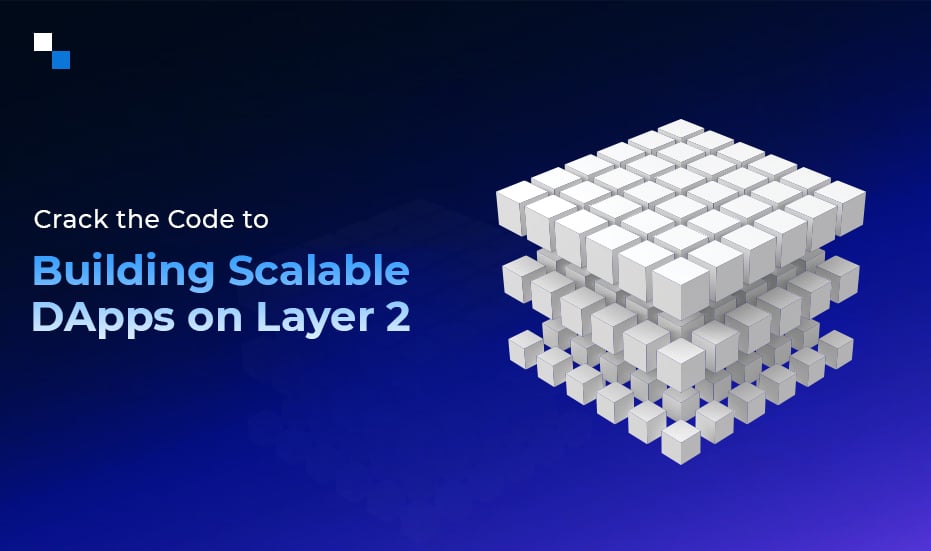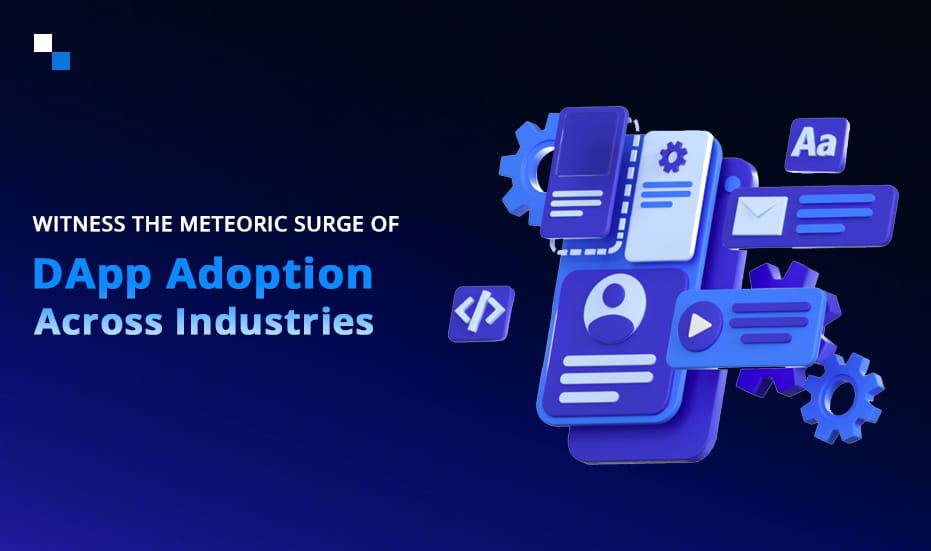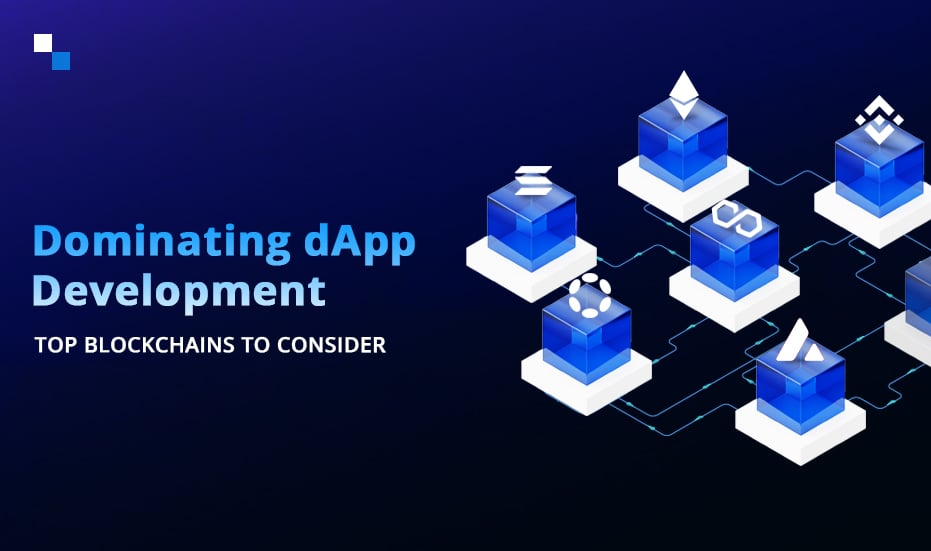
Smart Contract Audit Cost vs. Benefit: Is the Investment Worth It?
December 6, 2024
How Immutable X Blockchain Can Power Your Next Hit Game
December 9, 2024Table of Contents:
- What Are Layer 2 Solutions?
- Why Choose Layer 2 for Scalable dApp Development?
- Steps to Building Scalable dApps on Layer 2
- Best Platforms for Layer 2 dApp Development
- How Can a dApp Development Company Prove Beneficial?
- Case Studies: Successful Layer 2 dApps
- Takeaway
Decentralized Applications, also known as dApps, have transformed industries and liberated them from the mediators by allowing transparency and significantly better security. This is due to their functionality based on blockchain networks through smart contracts, but the success has also put a major bottleneck: scalability.
Traditional Layer 1 blockchain, such as Ethereum, face congestions that make them pricey and slow to process, thereby enabling Layer 2 to facilitate developers in scalable, efficient, and cost-effective dApp Development for businesses. Best practices are always followed by an expert dApp development company in the development of scalable applications.
Scalability issues in the traditional blockchain?
High Transaction Costs: Increased network usage results in higher fees.
Limited Throughput: Popular Layer 1 blockchains, such as Ethereum, process only ~30 transactions per second (TPS).
Latency Issues: Increased transaction times impact user experience.
How Layer 2 solutions would address those issues?
Layer 2 solutions help increase scalability, offloading transactions from the main blockchain for faster and cheaper transactions. This is what businesses and startups using dApp development services depend on to scale their projects effectively.
What Are Layer 2 Solutions?
Layer 2 refers to protocols built on top of Layer 1 blockchains like Ethereum. These solutions for dApp Development improve transaction throughput while maintaining the security and decentralization of the main blockchain.
Key Layer 2 Technologies:
Rollups: Compile several transactions into one batch, which is processed off-chain and then submitted on-chain to Layer 1 for finalization.
Plasma: child chains for fast trade anchored back into layer 1 occasionally for security.
State Channels enable parties to interact off the chain with only the final state settled on the chain.
With these technologies, the dApp development company achieves significant improvements in scalability and cost-effectiveness. This makes dApp development services more accessible
Why Choose Layer 2 for Scalable dApp Development?
As the blockchain ecosystem matures, the need for scalable and cost-effective dApp development grew very significant. Enter Layer 2 solutions—the innovative advancements revolutionizing the methodology. Let’s explore the compelling reasons that have led to the emergence of Layer 2 as the preferred option for scalable decentralized app development.
- Cost-Effectiveness and Gas Charges Reduction
One of the biggest challenges in the world of Layer1-based decentralized app development has been the high gas fees associated with on-chain transactions. However, platforms like Arbitrum and zkSync have stepped in as a solution, offering a massive reduction in gas fees of up to 90% in some cases. The cost-effectiveness related to Layer 2 platforms makes the latter a tempting choice for a dApp Development company aimed at building applications requiring high-frequency microtransactions.
- Quicker Transaction Periods
The Ethereum network has always struggled with the pain of slow transaction times, but it is one of those places that can grind the users’ experience and limit a dApp’s scalability, a challenge that Layer 2 solutions face when they use advanced scaling techniques, namely batching and off-chain processing, to amplify the TPS of a network. This exponential growth in TPS enables high-user-volume applications to accommodate Layer 2-based dApp development services and helps fulfill the rapidly increasing demand for real-time, responsive, and scalable decentralized experiences.
- Better User Experience
The amalgamation of diminished gas fees and accelerated transaction times provided by Layer 2 solutions culminates in a significantly enhanced user experience for dApp development and the users. Consequently, the dApp Development company creates applications that facilitate seamless interactions, whereby users encounter minimal delays and cost-effective operations. The improvement in user experience is one of the many essential features that enable dApps to gain widespread acceptance for allowing a much larger number of people to interact with and benefit from the functions of blockchain technology.
- Adoption and Accessibility
Layer 2 solutions have opened the road for increasing dApp adoption and availability, by tackling the scalability and cost issues that have long plagued the Ethereum ecosystem. Providers of dApp development services can now offer more efficient development for businesses and users who would like to leverage and use dApps. Consequently, this accessibility brings about a possibility of high-value dApp ecosystems through closer ties between innovation and actual user adoption.
Steps to Building Scalable dApps on Layer 2
We will dive into considerable detail regarding building scalable dApps on Layer 2, and there are some considerable steps in the procedures that will better equip you to begin your journey in decentralized application development.
1. Selecting the Appropriate Layer 2 Platform
It starts with the choice of the right dApp Development company, to begin with scalable dApp development on Layer 2. Each of the Layer 2 solutions offers unique benefits and trade-offs, so the choice depends on the specific requirements of your dApp project.
- Arbitrum: Best known for building different varieties of DeFi apps that require low fees and high transacted throughput.
- Optimism: It is meant to make smart contract migrations from Ethereum’s Layer 1 smoother, thus making the experience smoother while moving to Layer 2.
- zkSync: It utilizes the strength of zero-knowledge rollups to provide enhanced security and privacy to your dApp.
2. Setting up the Development Environment
Once you’ve chosen the appropriate Layer 2 platform, the next step in the dApp development services is to set up your development environment. This process involves integrating the necessary tools, SDKs, and APIs to ensure a smooth and efficient dApp development experience.
- Integrated Development Environments (IDEs) with platforms that provide the necessary infrastructure for writing, testing, and deploying your dApp’s smart contracts.
- Layer 2 SDKs: Familiarize yourself with the software development kits (SDKs) provided by your chosen Layer 2 solution to seamlessly interact with the platform’s APIs and features.
- Ethereum-compatible Wallets: Integrate compatible wallets, such as MetaMask, to enable your dApp’s users to securely manage their assets and interact with the application.
- Blockchain APIs: Leverage APIs that provide real-time access to the Layer 2 network, facilitating smooth transactions and data retrieval for your dApp.
3. Smart Contract Writing and Deployment
At the core of a scalable dApp are, of course, the smart contracts that actually power all this functionality. Here again, the construction of this smart contract on Layer 2 would also come with deep knowledge regarding the underlying protocols and some unique requirements. With the assistance of the dApp Development company, construct your dApp’s smart contracts, keeping in mind what specific protocols and features will be offered by your chosen Layer 2 platform.
4. Testing the dApp
Ensure scalability and reliability in your dApp development. This is a critical step included in the dApp development services. Implement rigorous testing and monitoring strategies to validate your application’s performance under various conditions. Test how tolerant your dApp is to heavy traffic and usage by applying load-testing scenarios that are very representative of real-world usage. Monitor using dApp via tools, which monitor your app live by checking those metrics about transactions, e.g. throughput latency, users involved, etc.

Best Platforms for Layer 2 dApp Development
- Arbitrum
- Focuses on fast and cost-efficient smart contracts.
- It’s compatible with Ethereum’s development tools.
- Optimism
- Reduces transaction costs while maintaining Ethereum-level security.
- Provides an easy migration for existing Ethereum dApps.
- zkSync
- It advanced cryptographic techniques to prioritize privacy.
- Ideal for financial applications requiring anonymity.
- Polygon
- Combines Layer 2 features with interoperability.
- Supports a wide range of DeFi and NFT applications.
Each of them has its merit, and their choice would depend on the specific needs of the project.
How Can a dApp Development Company Prove Beneficial?
Working with a dApp development company ensures expertise, efficiency, and quality.
Advantages of Engaging Professionals
- They have expertise in layer 2 ecosystems, which assures the developers that the solution found will be optimal.
- From DeFi to gaming, they deliver customized dApp development services.
- Professional teams methodically address potential vulnerabilities and scalability bottlenecks for the dApp development.
Case Studies: Successful Layer 2 dApps
Uniswap v3 on Arbitrum
- Reduced gas fees, enhancing DeFi adoption.
- Handled over a billion dollars in trading volume within weeks of launch.
Loopring on zkSync
- Achieved lightning-fast transactions for a decentralized exchange.
- Delivered a user-friendly experience with reduced costs.
Takeaway
Solutions like Layer 2 have truly revolutionized dApp development services, trying to solve the blockchain scalability challenges. The solutions reduce costs, accelerate processes, and improve user experience – requirements for the next generation of decentralized applications.
Future highlights of DApp development on layer 2
-
- Advancements in zk-Rollups promise even higher throughput.
- State channels are evolving to support more complex dApp use cases.
- The rise of enterprise-grade dApps will accelerate Layer 2 adoption.
To be successful in this dynamic space, partnering with a Dapp Development Company would be an ideal strategic move. With expertise in creating decentralized apps Antier ensures your project’s success from concept to deployment. If you’re looking to build high-performance dApps, collaborate with specialists today.



